Do not underestimate the awesome power of the French press. Also known as a cafetière—or, less elegantly, as a coffee plunger—this ever-popular brewing method is the cornerstone of many an energized morning.
We’ll admit: this is an easy-to-use coffee maker—even more so when compared with the complicated mechanics of a bean-to-cup or a state-of-the-art La Marzocco. However, don’t be fooled by the seeming simplicity: making coffee—and ensuring said coffee is the best it can be—requires precision, timing, and care. But don’t be perturbed; getting it right is a breeze when you know how.
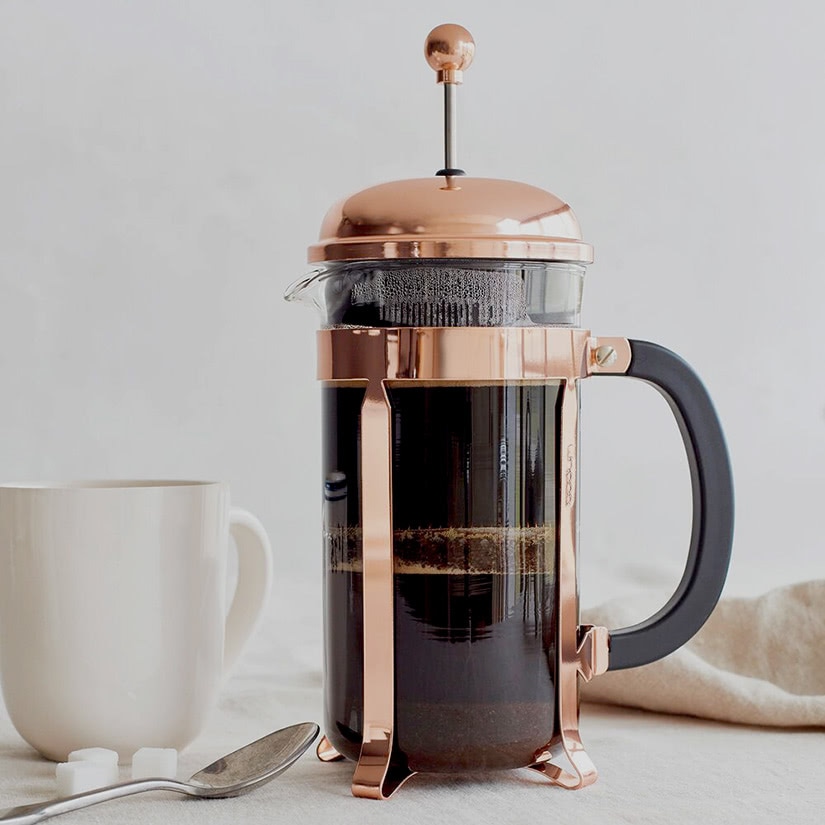
Requiring just a few minutes of your time, several spoonfuls of the best ground coffee, and boiling water, the art of the French press can be mastered by all. Seeking to replace your (dare we say it?) instant coffee with something more a la mode—not to mention, far superior in taste? Look no further than the French press.
Guests and family members alike will appreciate your progression into the world of good coffee. And the best part is this: French presses don’t cost the Earth. Quite the opposite: you can pick one up for less than the price of lunch.
So, if you’re a coffee convert and you’d like to move up in the ranks of coffee aficionado status (a black belt, if you will), read on for our ultimate guide on how to operate a French press. One thing’s for sure: you’ll never go back to instant.
What is a French press?
The easiest to use of coffee makers, the French press is an emblem of elegance and simplicity. Constituting a glass (look for borosilicate) jug, a lid, and a metal plunger with fine mesh, the French press looks elegant and produces exceptional coffee. But how did it come to be?
The French press came into existence, like many other day-to-day inventions, by serendipity. A French monsieur made a blunder when preparing his daily coffee during his morning walk (it was the 1850s, so Starbucks wasn’t an option). He (gasp) forgot to put his coffee in his water before boiling it, as per the usual method. So, he added his ground coffee and wondered what to do next:
Alas, by sheer good fortune, an Italian merchant sauntered by. The Frenchman purchased a fine metal mesh from the señor and used it to press down the coffee grounds. The result? Only the best coffee he’d ever tasted.
And so, the French press was born.
And—despite the first patent coming from Italy—the French have retained their proprietorship over the invention. Hey, Italians enjoy a stellar reputation for coffee, so let’s let this one fly.
Why and when should you use a French press?
Reasons for using a French press? Truly, they’re endless. For starters, French press coffee produces a full-bodied brew—dense, dark, and perfect when paired with milk or taken black.
But why is it so unequivocally delicious? The French press bypasses the need for paper filters, which, while fit for purpose, also absorb many of the crucial oils in your coffee grounds. Oils carry much of the taste and flavors. So, losing them in the process detracts from the richness of your brew.
Pure flavors = a whole experience
And, thanks to the steeping process—much like the finest tea—you benefit from well-rounded flavors, and nothing is lost. Yes, that 4 minutes (we’ll get to that) of steeping makes a gargantuan difference to your sipping experience. Not only for taste, either: no, your olfactories will appreciate the inviting fragrance, while the rich darkness just begs to be poured into fine china—or your favorite travel coffee mug.
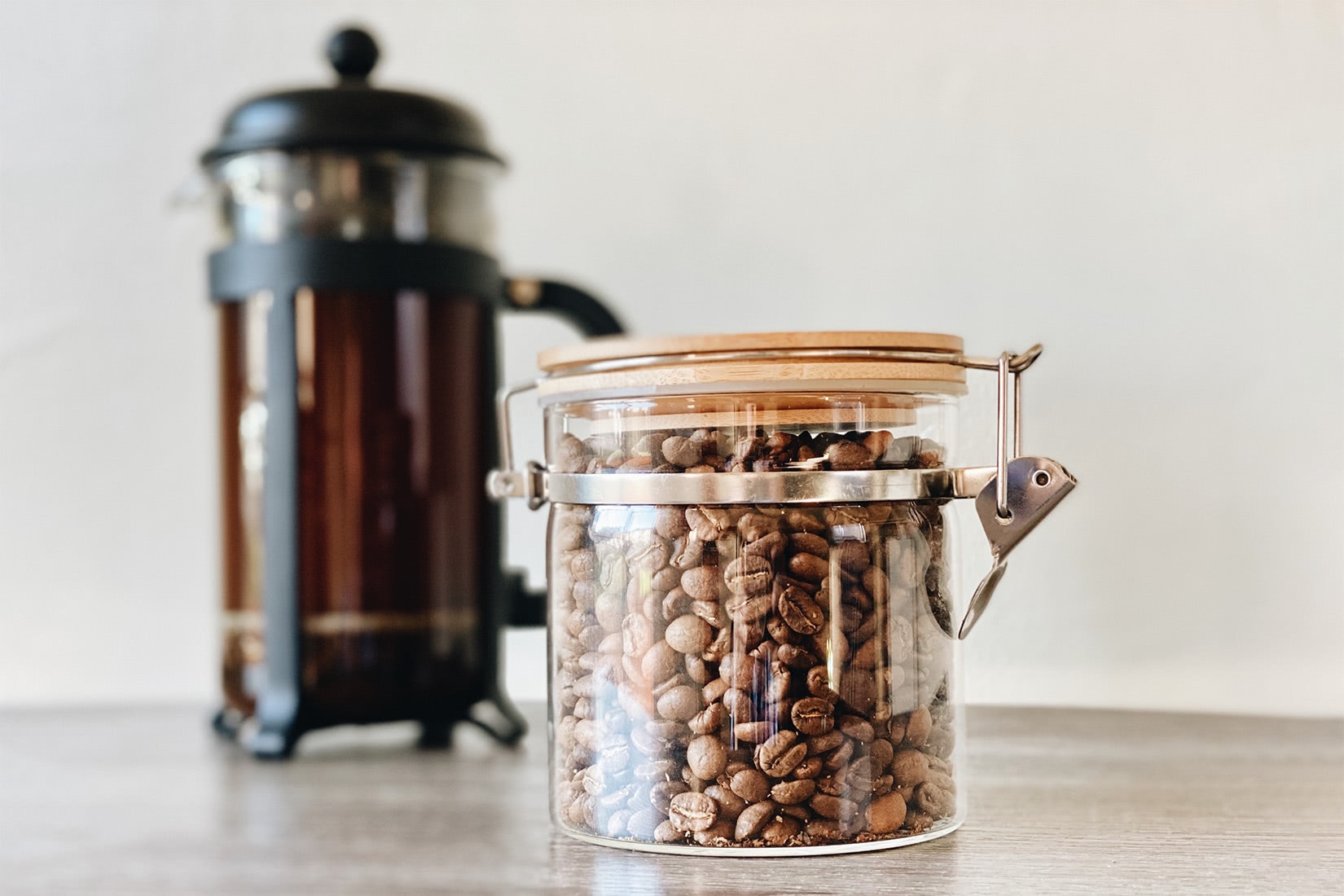
The heat is on
A key—and often overlooked—benefit of the French press is that it keeps the correct water temperature. Rather than the speedy heating and subsequent cooling of drip coffee machines, the French press maintains optimal temperatures throughout. Sound negligible? Think again: the right temperature for the right duration makes for a delectable brew you’ll be proud to serve.
When is the time right?
We’re sure the coffee lovers of the world will unite in saying: any time. Well, perhaps not right before bedtime. But, waking up to a fragrant brew is simply the best way to start your day (preceded by some yoga, maybe). French press is perfect if you are looking for full-bodied and flavourful coffee. Since French press coffee contains a substantial 107mg of caffeine per 230ml cup, you’re sure to get a kick-start on a hazy morning.
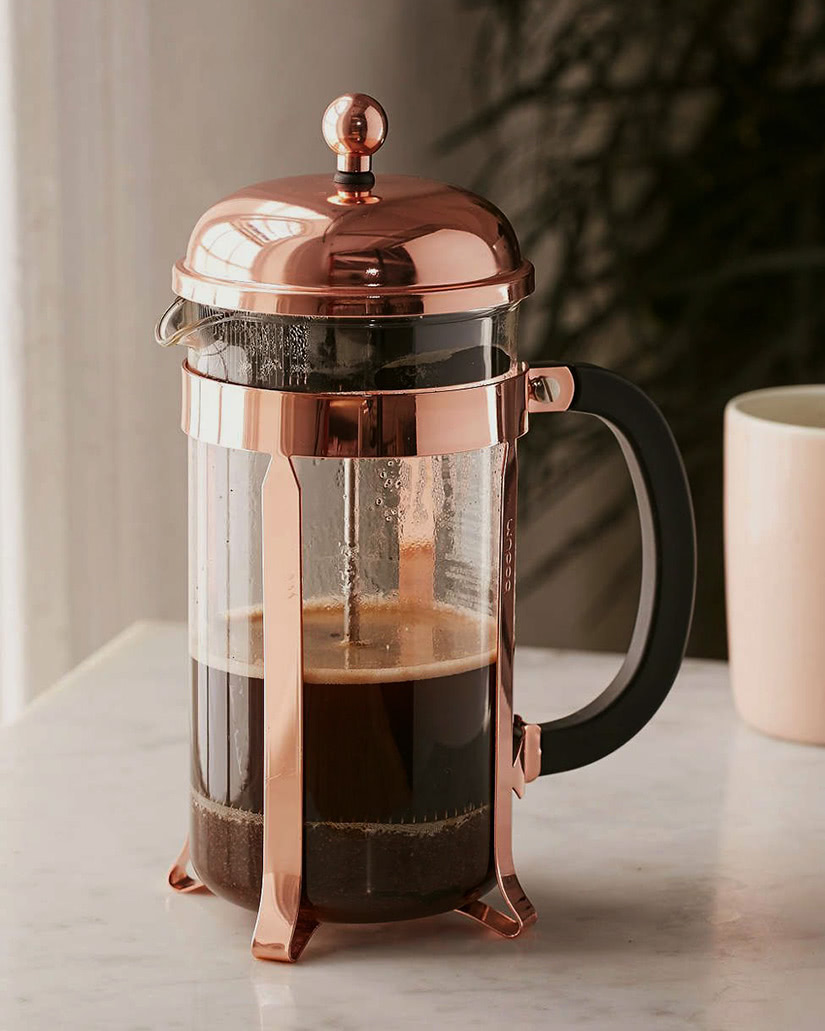
Sipping your French press coffee is an experience that should be savored, not rushed.
Making a French press coffee: what you’ll need
One of the least demanding of coffee makers, a French press requires little equipment:
A French press, of course
Naturally, you’ll need the best French press coffee maker. We adore the Bodum Chambord French Press, made from borosilicate glass, stainless steel, and a quirky design that’s sure to gain compliments before you’ve even served the coffee. This model boasts a 1L capacity, ensuring you’re the host with the most at coffee catchups chez toi.
The best coffee beans
You won’t get far without a hearty pouch of coffee beans—pick your favorite from our guide to the best coffee beans in town. Your chosen beans truly dictate the ultimate flavors in your coffee; for a lighter brew, go for Mexican; for chocolate and florals, go for Costa Rican; for spices, pepper, and stone fruit notes, opt for Indonesian.
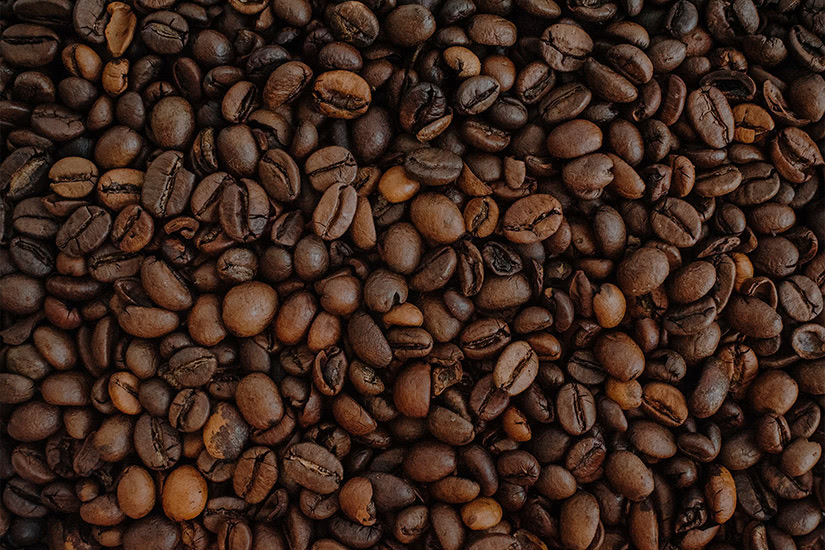
If you can’t decide—or you’re a sucker for subscriptions—trust the experts over at Atlas Coffee Club, delivering premium, hand-selected coffee beans right to your door. Really, there’s (literally) a whole world of flavors available to sample, so don’t waste time—find your next best brew.
A quality coffee grinder
Putting whole beans in a French press is a faux pas we are not willing to even imagine. Thankfully, a good coffee grinder will do the trick: grind your beans to a coarse, even grind, roughly the size of sea salt flakes.
You’ll also need a kettle—or, if you’re out in the wild, a pot and stove will suffice.
How to make coffee in a French Press: A step-by-step guide
Step 1: Grind your coffee to a coarse grind
The correct grind is of the utmost importance: too fine, and you’ll find pesky grinds in your cup, not to mention a murky brew. If your grinder doesn’t have numbered settings, allow it to run for 8 to 10 seconds to achieve the correct level of coarseness.
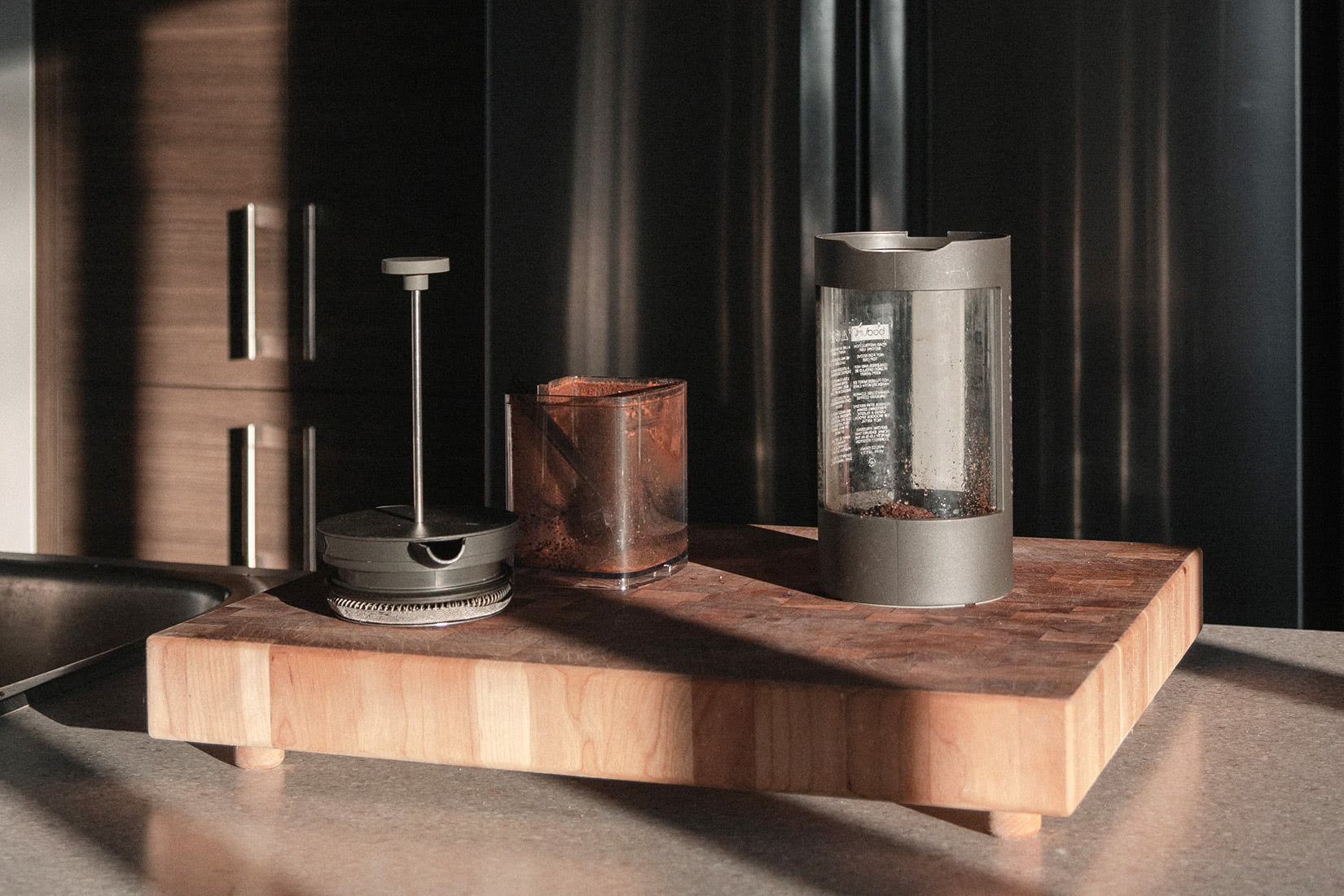
Tip: use high-quality, small-batch coffee for the best results. The more recent the roast, the fresher your coffee will taste.
Step 2: Get your ratio right
Add 30 grams (or roughly 6 tablespoons) of ground coffee per 350ml of boiled water. While you can adjust the amount to your taste, we advise starting with the well-established 1:12 ratio while you’re getting to grips with the method.
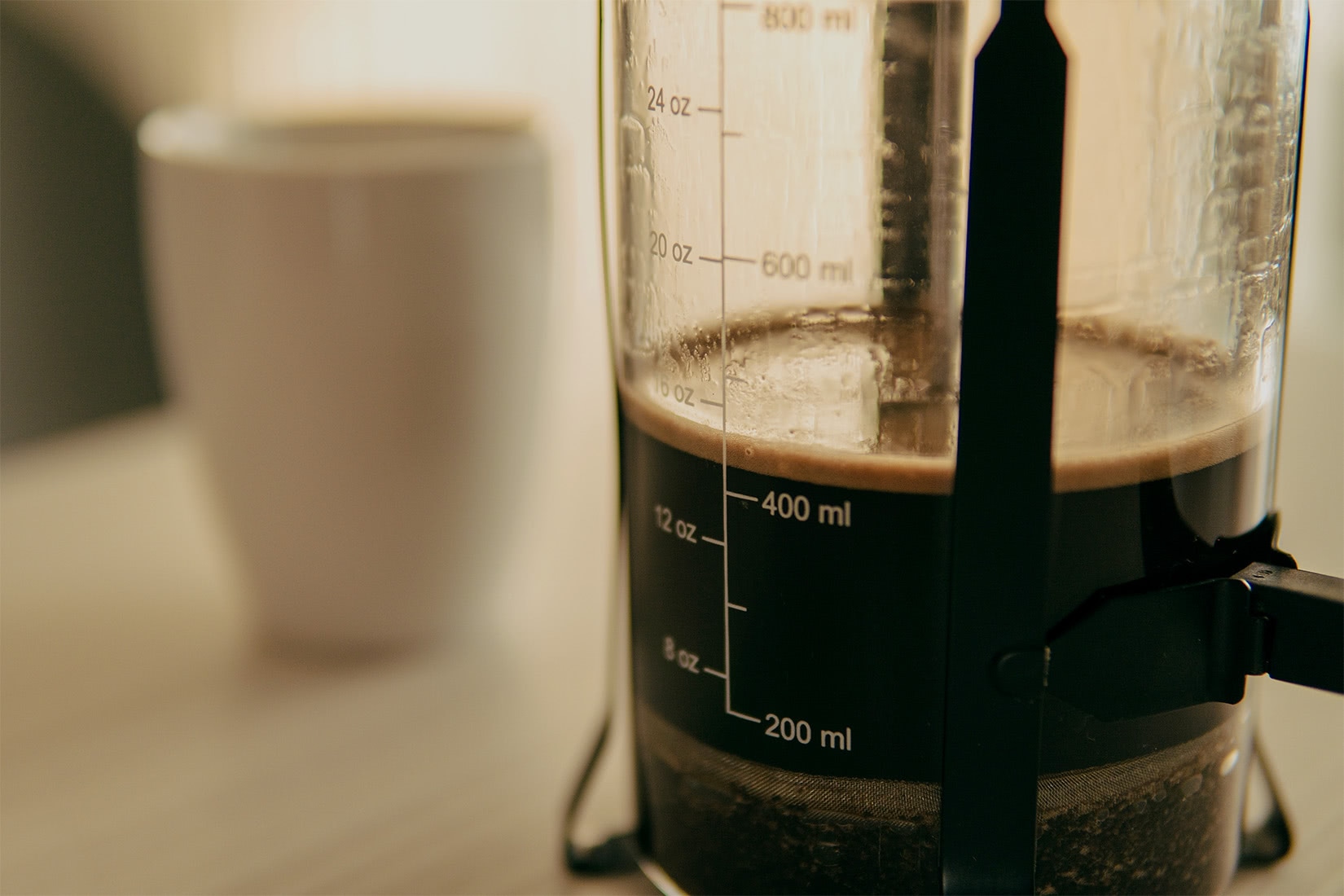
Want to avoid any rogue coffee grinds in your finished brew? Add a smidge of extra coffee, and leave a little water at the bottom of your press after pouring. The extra grounds will remain in the beaker, avoiding any unwanted grittiness.
Tip: preheat your French press with hot water first for a piping-hot brew.
Step 3: Add your boiled water
Once your ground coffee is set, add your boiled water. Don’t pour still-boiling water, as this will a) risk burning your coffee and b) risk over-extraction, which leads to bitterness.
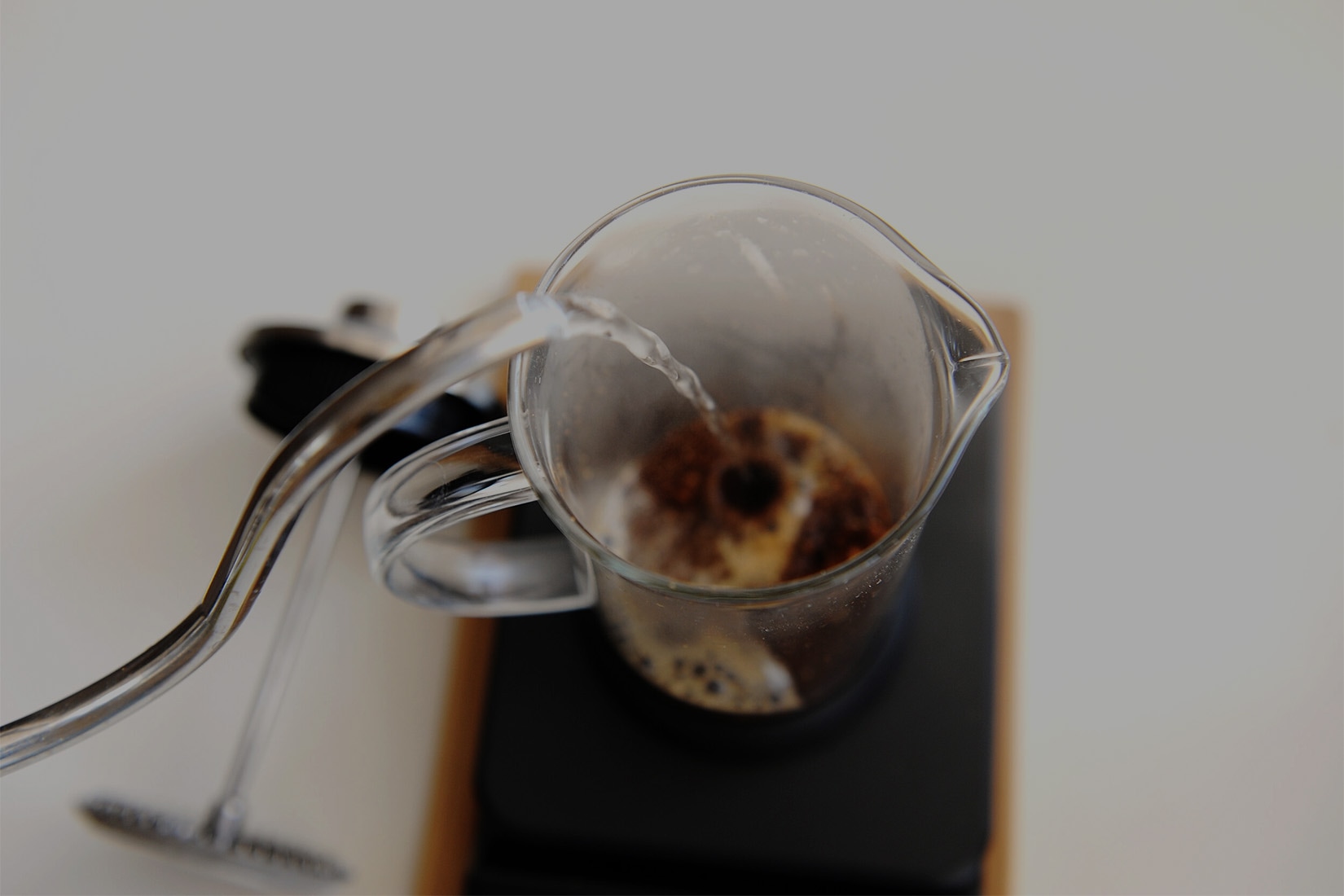
Step 4: Leave to steep
Leave to steep for 4 minutes: this is the bonafide timing for the best brew.
Step 5: Serve
Pour into your preferred cups or mugs, and savor your delicious java.
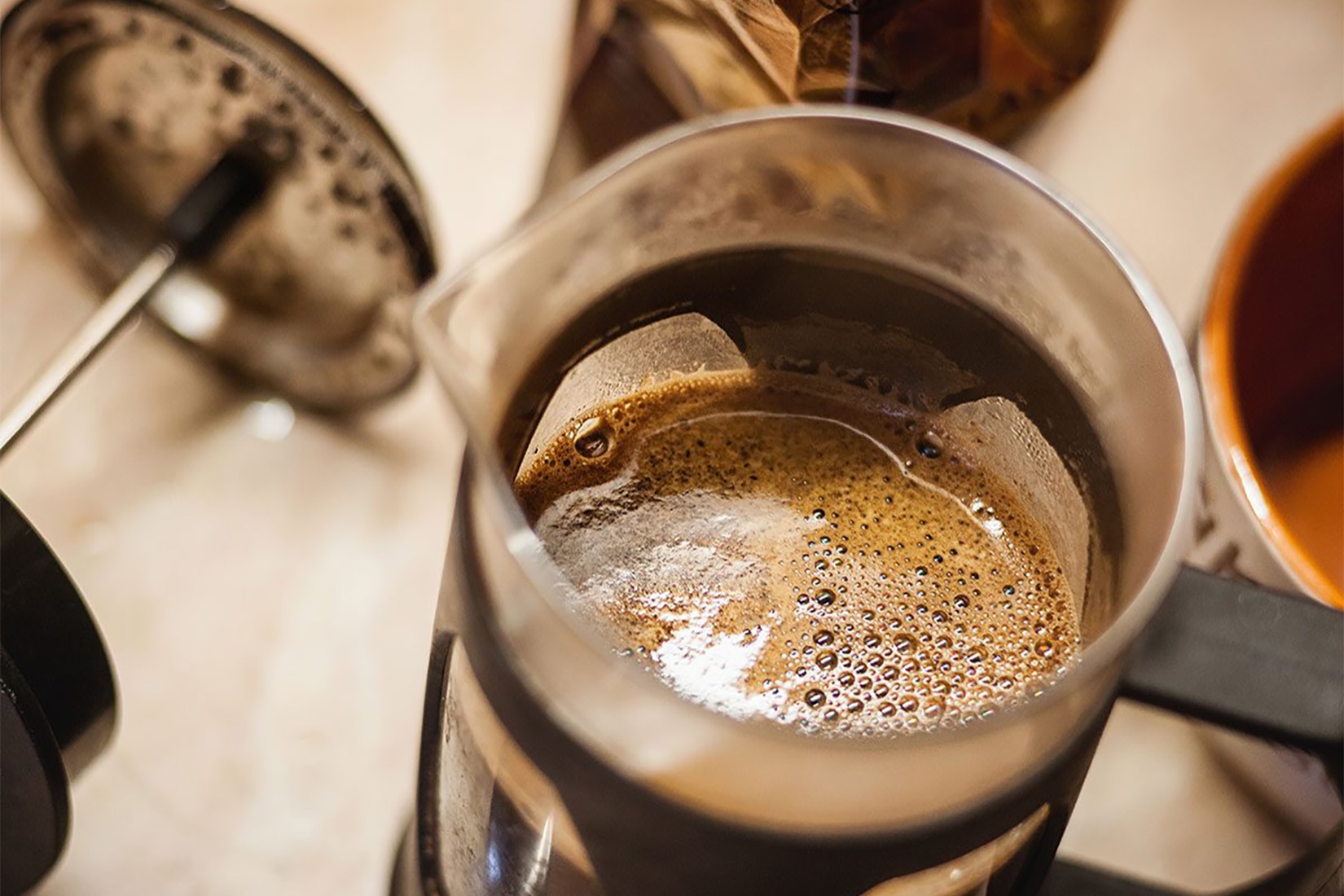
Worthy alternatives to French press
Fancy trying out other great coffee makers? Don’t limit yourself to the French press, however simple and elegant it may be:
For barista-style espresso at home, try on a drip coffee maker for size. Closely emulating those used by baristas, the drip coffee maker offers a bean-to-cup method, resulting in potent espresso. You can dress it up to a latte or cappuccino (to name a few) or keep it low-key as a sophisticated espresso, à la Italians.
For a less expensive and almost as simple brewing method, opt for a Moka pot. Serving rich, strong espresso, Moka pots are a one-pot-wonder to rival the French press. Or, if you’re all about convenience, consider a pod coffee machine like a Nespresso, Tassimo, or Lavazza.
Frequently asked questions on making French Press coffee
Naturally, too much caffeine can lead to an energy crash, so we certainly advise against overdoing it. There is some evidence to suggest that making French press coffee can increase your LDL cholesterol levels. While this is far from ideal, there is no evidence to suggest that French press coffee leads to an increase in other serious diseases.
The consensus is 1:12. So, if you’re using, say, 350 grams of boiled water, you’ll need 30 grams of ground coffee to achieve the best results.
Avoiding boiling water is a key consideration when learning how to use a coffee press. Pouring still-boiling water over your ground coffee leads to a duo of negative results. First, you’ll risk burning your ground beans. Second, your coffee will suffer over-extraction, leading to a less-than-pleasant bitterness.
Water and ground coffee are the key components of French press coffee. You need freshly boiled (but not boiling) water and good-quality coarsely ground coffee beans.










